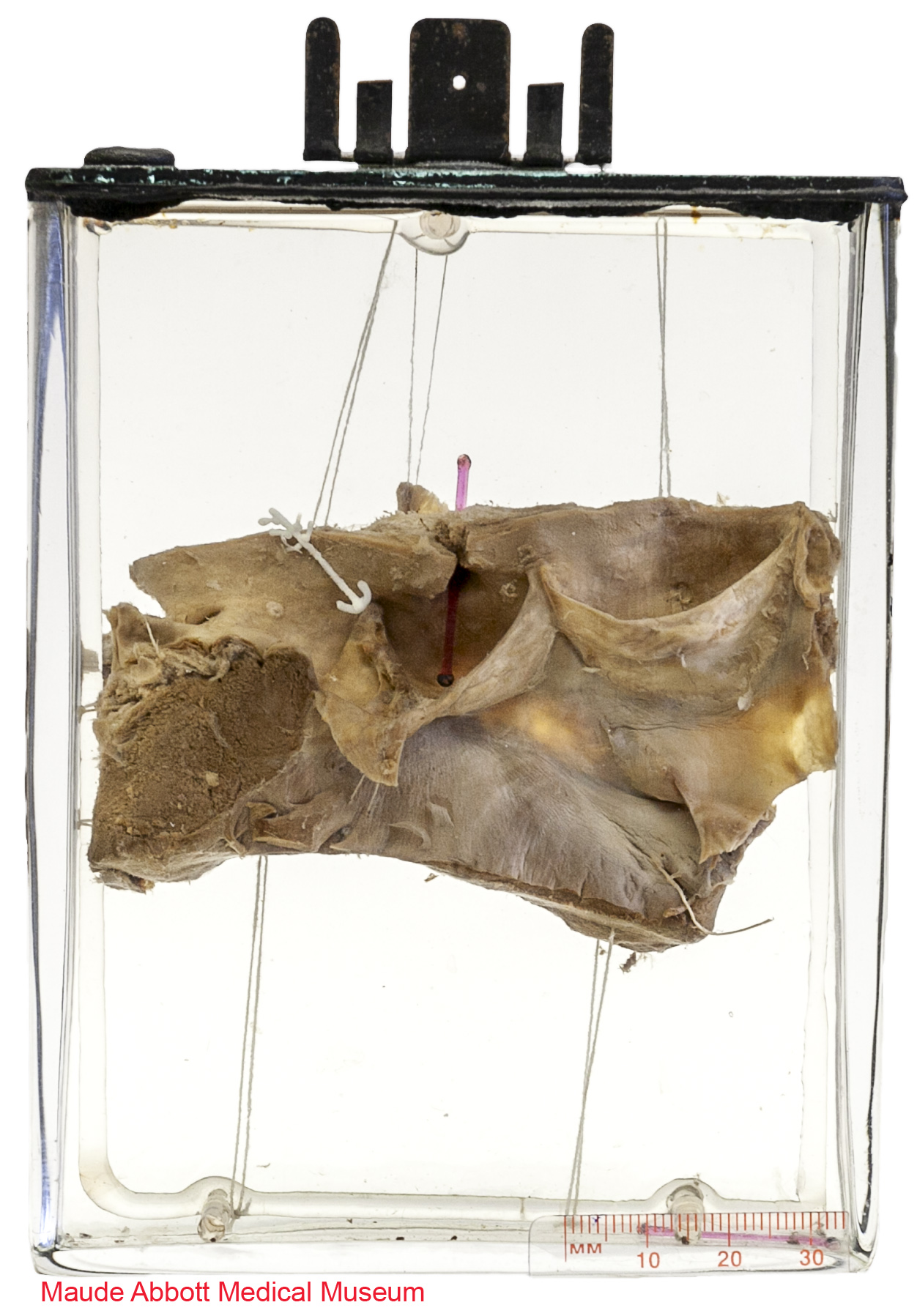
Abbott Specimen 2

Specimen Card Nomenclature
Fusion of coronary cusps
International Classification of Diseases
Bicuspid aortic valve
Atlas Illustration
None
Donor
Dr. Blackader/Dr. Duval
Date
1906
Age
Unknown
Description
The specimen consists of an aortic valve with two approximately equal size leaflets (as measured on the free cusp edge). A red rod is present in the orifice of a coronary artery. The white arrow points to the “median raphe” (the conjoined portion of two underdeveloped leaflets).
Comment
Bicuspid aortic valves were commonly thought to be the result of chronic or repeated episodes of endocarditis in the late 1800s. Additional notes on the specimen descriptive card – “Low calcified raphe. Chronic endocarditis. Aortic insufficiency.” – suggest that this was the situation in this case. We now know that the abnormality is a developmental anomaly, although the precise mechanism by which it occurs is unclear (see specimen 28).
The abnormality occurs in about 1% of the general population. Usually, it does not cause symptoms until middle age or older, when sufficient calcium deposition on damaged valve connective tissue causes stenosis and decreased cardiac output. Complications include heart failure and sudden death (the latter secondary to transient reduction in coronary artery blood flow followed by arrhythmia).